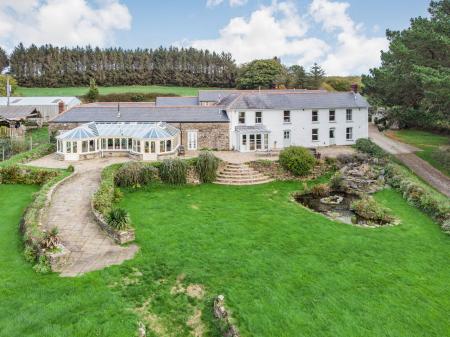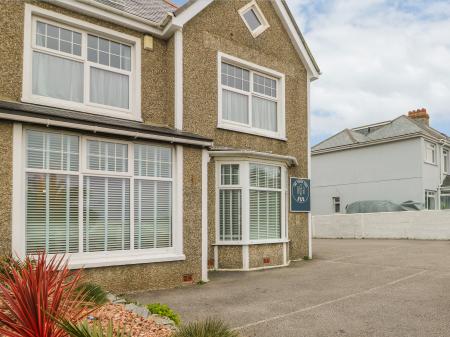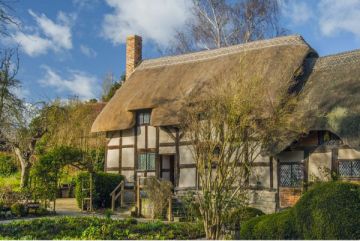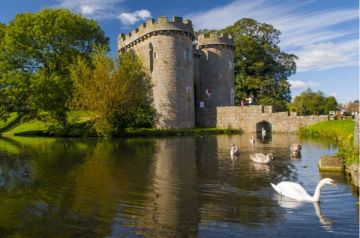Cornwall offers a wonderful mix of rugged coastal landscape, idyllic villages, and world-famous historical sites.
In this series of posts, I'll look at the very best of Cornwall. I started with 14 photos that celebrate Cornwall's incredible landscape, and in this post, I'll look at 13 of the most beautiful Cornish villages.
Of course, this list could be much larger, but these are villages that out family has visited in person and can recommend from experience. I've stuck strictly to villages for this article, and avoided towns, which could easily make up a separate article.
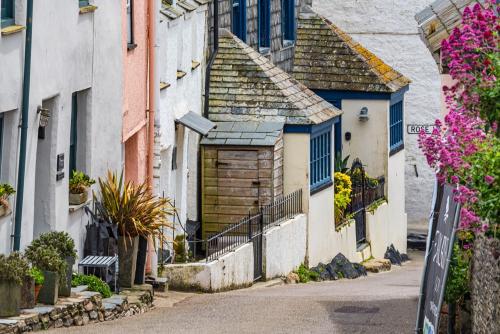
1. Port Isaac
Port Isaac is a picturesque fishing village nestled on the rugged northern coast of Cornwall. With its narrow, winding streets lined with whitewashed cottages and traditional stone buildings, this charming harbour settlement has maintained much of its historical character.
The village slopes dramatically down to a small, sheltered bay where colourful fishing boats rest on the sand at low tide, creating a postcard-perfect scene that has made it a favourite filming location, most notably for the popular television series 'Doc Martin'.
Beyond its visual appeal, Port Isaac offers visitors a genuine taste of Cornish coastal life with its working harbour, fresh seafood restaurants, and local artisan shops. The surrounding coastline features spectacular cliff-top walks along the South West Coast Path, providing breathtaking panoramic views of the Atlantic Ocean.
During summer months, visitors might be treated to performances by the Fisherman's Friends, a local sea shanty group that often performs on the harbour front, adding to the authentic maritime atmosphere that defines this delightful Cornish gem.

2. Boscastle
One of my favourite places in all of England, Boscastle is a picturesque fishing village that exudes timeless charm. The village straddles a steep-sided valley where the River Valency runs down to the sea, creating a natural harbour flanked by dramatic cliffs.
Boscastle's lanes are lined with attractive cottages and stone-built dwellings, whilst the harbour features distinctive twin breakwaters that curve outward like protective arms against the Atlantic swells.
Boscastle has a rich history as a port for lumber and limestone, but today, visitors are drawn to its Museum of Witchcraft and Magic and the neighbouring National Trust shop. The South West Coast Path runs through the village, making it a perfect centre for walkers.
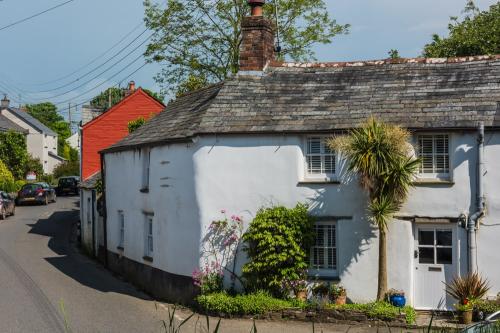
3. St Teath
St Teath is a peaceful rural parish and village near Camelford, in the idyllic countryside of North Cornwall. Located approximately five miles from the coast, St Teath centres around its medieval parish church, dedicated to St Tetha, a 6th-century Celtic saint.
St Teath oozes character with its grey stone cottages, attractive pub, and iconic clock tower in the heart of the village. Surrounded by undulating farmland, St Teath benefits from the area's mild climate whilst maintaining its authentic working village atmosphere away from the tourist crowds that flock to nearby coastal villages.
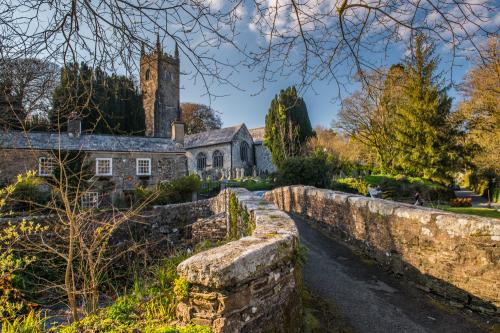
4. Altarnun
Altarnun is a picturesque village on the edge of Bodmin Moor. Indeed, the impressive 15th-century church of St Nonna is often referred to as the Cathedral of the Moors due to its imposing size.
Altarnun is notable for its traditional granite cottages, an ancient stone bridge spanning the gentle Penpont Water, and the distinctive medieval church tower that dominates the skyline.
The surrounding countryside offers breathtaking scenery with rolling moorland, deep river valleys, and ancient woodland providing walking opportunities for nature enthusiasts.
Altarnun is steeped in history and literary connections, notably featuring in Daphne du Maurier's novel 'Jamaica Inn' as the home of the sinister Vicar of Altarnun.

5. Cadgwith
Lying in a peaceful cove on the south of the Lizard Peninsula, Cadgwith is a quintessential Cornish fishing village seemingly frozen in time. Its deliciously picturesque cottages with whitewashed walls and thatched roofs tumble down the steep hillsides to the small harbour below, where colourful fishing boats rest on the shingle beach.
The village is split by a small stream that winds down the hill and empties into the English Channel, whilst towering rock cliffs cradle the village.
Despite its diminutive size, Cadgwith boasts a vibrant community spirit centred around its centuries-old fishing heritage, which continues to this day with small boats launching from the cove to catch crab and lobster.
Visitors can savour freshly caught seafood at the local pub or, like our family, an ice cream from the village shop. The South West Coast Path offers breathtaking walks along the dramatic coastline, revealing hidden coves and spectacular vistas across the rugged landscape that characterises this wonderful corner of Cornwall.
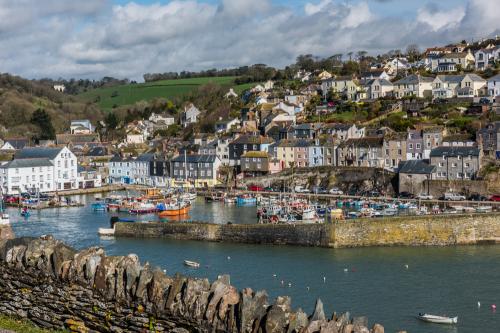
6. Mevagissey
One of the most popular villages on Cornwall's south coast, Mevagissey evolved from humble beginnings as two distinct settlements, Meva and Gissey, that gradually merged into the characteristically Cornish fishing village we know today.
During the 18th and 19th centuries, Mevagissey flourished as both a pilchard fishing hub and a notorious centre for smuggling activities, with its labyrinthine network of narrow, winding lanes used to confound customs officials.
The village's twin harbours, constructed in 1774 and expanded in the 1800s, cemented Mevagissey's maritime importance, whilst the distinctive colour-washed fishermen's cottages that climb the steep valley sides stand as testament to generations of seafaring heritage.
Following the decline of the pilchard industry in the early 20th century, Mevagissey successfully reinvented itself, transforming from a working fishing port into a popular tourist destination whilst maintaining its authentic maritime character.
Today, whilst pleasure craft now outnumber fishing vessels in the picturesque harbours, several traditional fishing boats continue to operate, and visitors can explore the village's rich smuggling and fishing heritage at the Mevagissey Museum, housed within a former 18th-century boatbuilder's workshop on the harbourside.
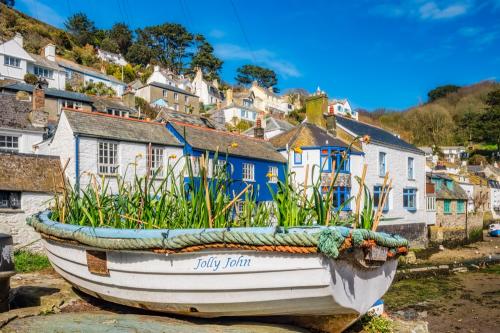
7. Polperro
Perched dramatically along a steep ravine where the River Pol meets the sea, Polperro's history stretches back to the 13th century when it first appeared in official records as a fishing hamlet.
The village reached its zenith during the 18th and early 19th centuries, developing a notorious reputation as Cornwall's smuggling capital, where brandy, lace, and tobacco were regularly landed under cover of darkness.
The sheltered harbour, protected by massive sea walls built in the 16th century and repeatedly strengthened against fierce Atlantic storms, provided safe haven for Polperro's fleet of fishing vessels which brought prosperity through pilchard fishing until the shoals disappeared in the 1960s.
Following the decline of both smuggling and the fishing industry, Polperro transformed itself into one of Cornwall's most photographed and visited coastal villages whilst maintaining its historical character.
The remarkable preservation of Polperro owes much to its relative isolation—the village banned motor vehicles from its exceptionally narrow lanes long before it became fashionable, requiring visitors to park at the village entrance and proceed on foot through the ancient passageways.
Today, whilst still home to several working fishing boats, Polperro celebrates its colourful past through the excellent Heritage Museum of Smuggling and Fishing housed in an old fish processing factory, where visitors can discover fascinating tales of legendary local smuggler Zephaniah Job, often referred to as the 'Smuggler's Banker', who managed the finances of Polperro's clandestine trade network with remarkable efficiency during the late 18th century.
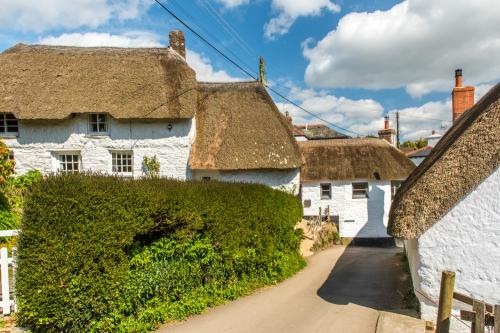
8. Helford
The picturesque village of Helford sits on the south bank of the Helford River estuary, south of Falmouth.
Originally established as a port during the medieval period, Helford flourished as a busy centre for trade and smuggling throughout the 16th and 17th centuries, when its secluded location and network of wooded creeks provided the perfect haven for clandestine operations.
The village's historical significance is evident in its ancient stone cottages and the venerable 13th-century Shipwrights Arms public house, which continues to stand as a testament to the settlement's enduring connection to seafaring traditions.
Helford gradually transformed into the tranquil hamlet visible today, characterised by its whitewashed cottages adorned with colourful gardens that slope gently towards the water's edge.
The surrounding area encompasses an enchanting landscape of ancient oak woodlands, hidden coves, and the spectacular subtropical gardens of nearby Trebah and Glendurgan, whilst the village maintains its unspoilt charm despite becoming a favoured destination for those seeking a glimpse of traditional Cornish coastal life.
Helford Passage, with its passenger ferry service that has operated since medieval times, connects the village to the northern shore of the river.
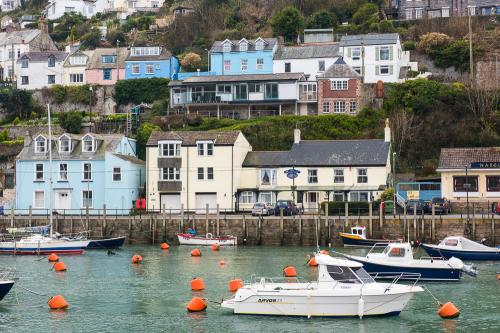
9. Looe
Looe is a delightful fishing village with a rich maritime heritage dating back to medieval times. First recorded as a settlement in the Domesday Book of 1086, the town is uniquely divided by the River Looe into East and West Looe, which were historically rival communities connected by a bridge since the 15th century.
East Looe developed as a thriving port and market town, while West Looe remained smaller but equally significant for fishing. During the medieval period, Looe flourished as an important trading hub for pilchards, with its fish cellars and processing facilities supporting a bustling export trade to Mediterranean countries.
The town's narrow, winding streets and picturesque fishermen's cottages climbing up the steep valley sides bear testament to centuries of maritime commerce and the wealth it generated for local merchants.
The imposing Guildhall, dating from 1878, is a reminder of this period of prosperity. Despite modernisation, Looe has carefully preserved its historical essence, with landmarks such as the Old Guildhall Museum and Gaol and the 13th-century church of St Nicholas offering glimpses into its colourful past.
More recently, Looe has served as a setting for the popular BBC TV series, 'Beyond Paradise'.
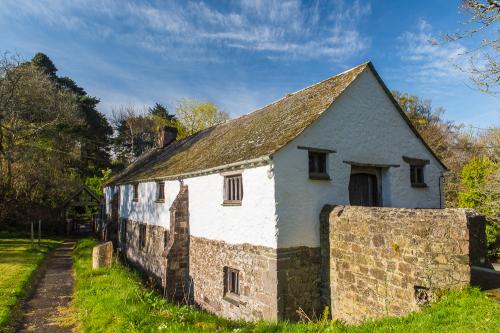
10. Poundstock
Poundstock is a village with roots stretching back to the Domesday Book of 1086, when it was recorded as "Pontestoch". The village's medieval history remains palpably present in the form of the exquisite 15th-century Gildhouse, one of the best-preserved church houses in Cornwall.
This Grade I listed building stands proudly alongside the parish church of St Winwaloe, forming a historic duo that has witnessed centuries of local life, from the tumultuous days of the Prayer Book Rebellion to the quiet persistence of traditional Cornish rural existence.
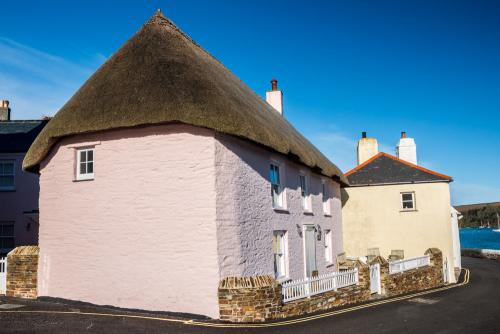
11. St Mawes
Situated on the eastern shore of the Fal Estuary on Cornwall's Roseland Peninsula, St Mawes boasts a rich maritime history. The village takes its name from the Celtic saint, Maudez, and rose to prominence in the Tudor era when Henry VIII ordered the construction of St Mawes Castle between 1539 and 1545 as part of his coastal defence programme against threatened French and Spanish invasion.
This perfectly preserved clover-leaf shaped fortress remains one of the finest examples of Tudor military architecture in Britain, standing sentinel over the sheltered natural harbour.
Throughout its history, St Mawes thrived as a busy fishing port, with pilchard fishing bringing prosperity throughout the 18th and 19th centuries. The village's strategic position at the mouth of the Carrick Roads waterway ensured its importance for trade and defence, while its sheltered aspect provided safe haven for vessels.
Dramatically transformed by tourism in the modern era, St Mawes retains many reminders of its maritime heritage in its narrow winding lanes, traditional cottages, and historic quayside.
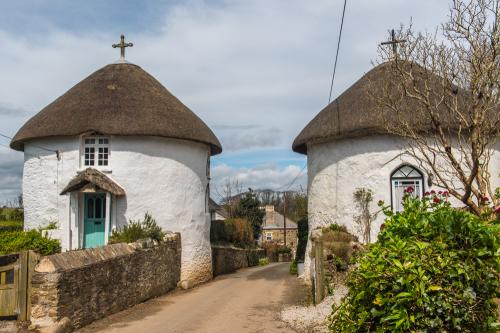
12. Veryan
Veryan is a picturesque village on the fringes of the Roseland Peninsula. Originally associated with St Symphorian, a 6th-century saint, the village's name evolved from 'Elerch' to 'Veryan' over centuries of Cornish history.
Most notable among its historical treasures are the five striking round houses, constructed in the early 19th century by Reverend Jeremiah Trist (1773-1829), the vicar of Veryan. According to tradition, these circular thatched dwellings were built with no corners so the devil would have nowhere to hide.
Veryan's 13th-century parish church is dedicated to St Symphorian. The presence of a Celtic cross set into the wall above the porch suggests that there was a much earlier church on the site.
The harbour at Portloe formed an essential part of Veryan's maritime history, facilitating both legitimate trade and the more clandestine activities of smuggling that flourished along the Cornish coast. During the Napoleonic Wars, the strategic importance of Veryan Bay became evident, with the nearby Nare Head serving as a lookout point.
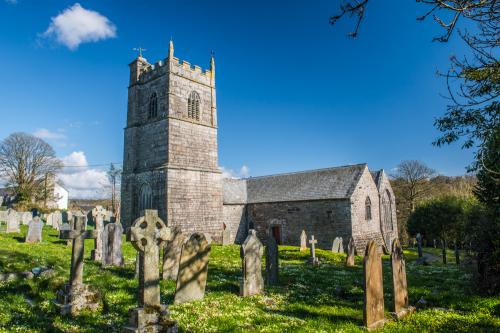
13. Blisland
The attractive village of Blisland stands on the fringe of Bodmin Moor. The 12th-century church is dedicated to St Protus and St Hyacinth, sixth-century brothers known locally as 'Pratt and Hatt'. The church features a 15th-century roof with richly-painted bosses and carvings of angels.
The village is unusual in that it has a green, something rare amongst Cornish villages. On the edge of the village is the Blisland Inn, a former winner of the CAMRA National Pub of the Year and a favourite amongst aficionados of real ale.
Blisland Manor House dates to the Tudor period, but nearby Lavethan House is even earlier, incorporating features from a 15th-century house.
Outside Blisland are the Stripple Stones, a circular henge monument from the Neolithic period.
My abiding memory of visiting Blisland is seeing people sitting at tables outside the pub, enjoying a cool pint, while I bustled about photographing everything I could see. I felt terribly conspicuous and more than a little envious!
MOST POPULAR POSTS
